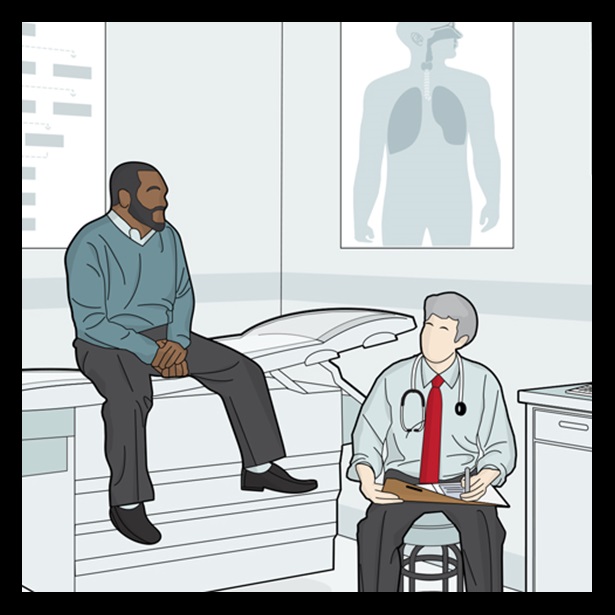Outpatient Antibiotic Prescribing Varied Across the United States in 2017
Editor’s note: This fact sheet is no longer up-to-date. See the latest version here.
Overview
The prescribing of antibiotics in outpatient health care facilities, such as primary care clinics and emergency rooms, represents a large proportion of antibiotic use in the United States. One study found that these settings accounted for over half of all dollars spent on antibiotics in the U.S. in 2015.1 Because of this contribution to overall antibiotic prescribing, any efforts to minimize the threat of antibiotic resistance and improve patient safety must focus on improving antibiotic use in outpatient facilities.
One important aspect of outpatient antibiotic stewardship is understanding variations in antibiotic prescribing. For example, are patients in certain states prescribed antibiotics at a higher rate than those in other locations? What types of providers account for the largest amount of antibiotic prescribing among outpatients? This type of evaluation affords a better understanding of how antibiotics are prescribed in the U.S. and also allows for improved targeting of antibiotic stewardship efforts.
The Centers for Disease Control and Prevention examined 2017 IQVIA Xponent data on outpatient prescribing of oral antibiotics in the U.S.2 Presented below are select results from this analysis, focusing on geographic variation in the rate of prescriptions and the types of providers ordering antibiotics in outpatient settings.3 Additional analysis, supported by The Pew Charitable Trusts, is available on the agency’s website.
Geographic variation in outpatient prescribing
Clear geographic variation exists in the prescribing of outpatient antibiotics in the U.S. On average, individuals in Southern states are prescribed more antibiotics than those in any other part of the country.4 In contrast, Western states had the lowest prescribing rates overall. For example, individuals in West Virginia, the state with the highest antibiotic prescribing rate, received over twice as many antibiotics in 2017 as those in Alaska, the state with the lowest prescribing rate (after adjusting for differences in population size). Seven states, all in the South, averaged one antibiotic prescription or more per person annually.
Although geographic variation alone does not indicate how much of these states’ antibiotic prescribing is unnecessary or inappropriate, it highlights regions where targeted antibiotic stewardship efforts may prove useful.
Outpatient prescribing by provider type
Understanding which types of health care practitioners most frequently prescribe outpatient antibiotics can helpprioritize antibiotic stewardship efforts. Primary care physicians—including family practice doctors, pediatricians, and internal medicine physicians—are key providers of outpatient health care services in the U.S. Collectively, they accounted for 38 percent of all outpatient antibiotic prescriptions in 2017, or 410 prescriptions per provider. Nurse practitioners and physician assistants also play an important role in outpatient antibiotic prescribing, accounting for 28 percent of all outpatient prescriptions and prescribing at a similar rate to primary care physicians—409 prescriptions per provider. Engaging these practitioners will be essential to improving outpatient antibiotic stewardship.
A wide range of other health care providers also regularly prescribe antibiotics in outpatient settings, such as dentists (10 percent), emergency medicine physicians (5 percent), and dermatologists (2 percent). Although the proportion of total antibiotic prescriptions is not indicative of the appropriateness of prescribing, targeted engagement of these and other outpatient providers in antibiotic stewardship efforts could have a meaningful impact on reducing unnecessary antibiotic use.
Endnotes
- Katie J. Suda et al., “Antibiotic Expenditures by Medication, Class, and Health Care Setting in the United States, 2010-2015,” Clinical Infectious Diseases cix773, https://doi.org/10.1093/cid/cix773.
- Centers for Disease Control and Prevention, “Outpatient Antibiotic Prescriptions—United States, 2017,” accessed Nov. 1, 2019, https://www.cdc.gov/antibiotic-use/community/programs-measurement/state-local-activities/outpatient-antibiotic-prescriptions-US-2017.html.
- Please note that the results presented are based on a modified methodology from past years of analysis. Beginning in 2017, improvements to IQVIA’s methodology now take into account prescriptions that were ordered but ultimately not dispensed. This includes prescriptions that were filled but not picked up by the patient. This methodological change limits direct comparison to analyses from previous years.
- U.S. Census Bureau, “Census Regions and Divisions of the United States,” https://www2.census.gov/geo/pdfs/maps-data/maps/reference/us_regdiv.pdf. For this analysis, the four U.S. regions—Northeast, South, Midwest, and West—were based on U.S. census regions.


Antibiotic Use in Outpatient Settings


National Targets to Improve Outpatient Antibiotic Selection


Why Doctors Prescribe Antibiotics—Even When They Shouldn’t













